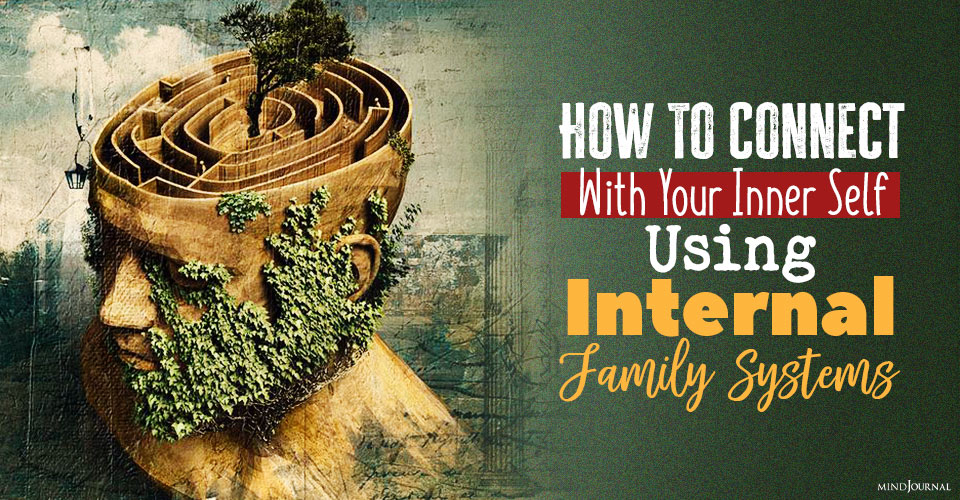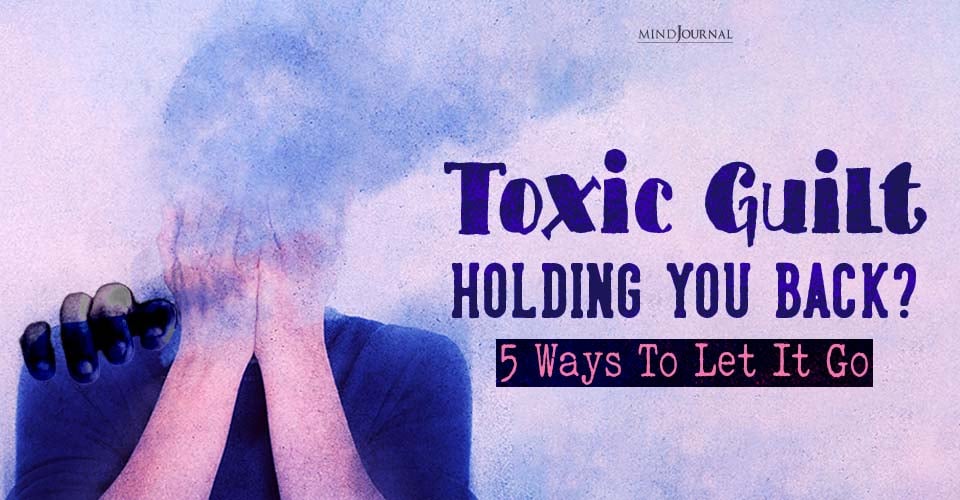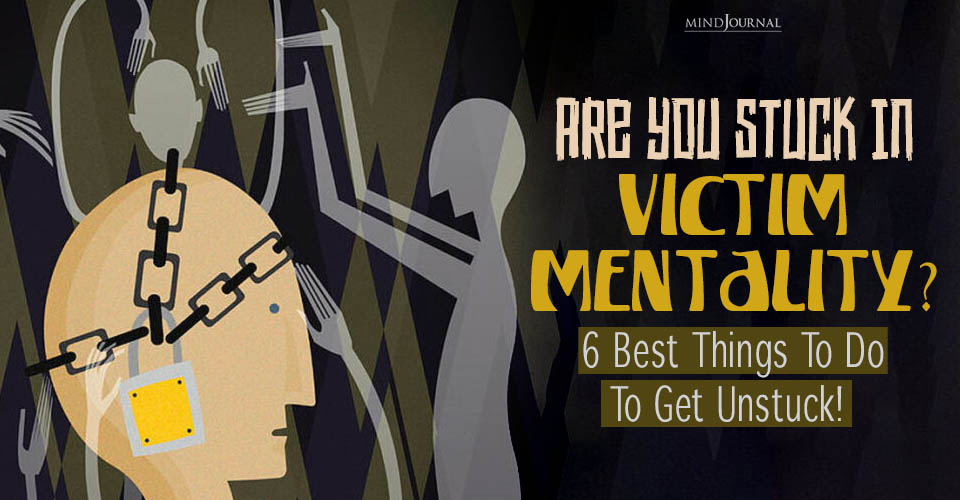Each individual possesses different inner parts that act as inner family entities. These sub-personalities may have conflict while being together, just like a family. It is important to achieve balance within the internal family systems.
Applying systematic therapy helps you explore your inner world and helps your ‘Self’ not to get overwhelmed by your inner family parts.
Of all the psychological and spiritual tools out there, Internal Family Systems (IFS) are one of the most powerful. Never heard of it? That’s okay. Most people haven’t. And my intention is to change that. Ignore the complicated-sounding name for a sec and hear me out:
Internal Family Systems is such a useful inner work approach because it helps us to create inner balance and rediscover our spiritual wholeness.
In fact, I have found it so useful on the spiritual path that I use its approach nearly every day to practice mindful self-compassion and soul retrieval (aka. integrating disconnected parts of the psyche). Want to learn the basics of IFS? Keep reading and I’ll walk you through it …
What is Internal Family Systems?
Also referred to as Parts Work, Internal Family Systems is a form of psychotherapy that focuses on reintegrating and harmonizing the inner parts of us (also known as our subpersonalities). Developed by Richard C.
Schwartz in the 1980s, Internal Family Systems is based on the premise that we all contain an inner family composed of many different parts. At the core of ourselves exists a wise, calm, and loving Self that we seek to reunite with during this therapeutic process.
We All Have an Inner Family

As professor and author Tom Holmes writes, we all have an inner family composed of different parts:
In the Buddhist tradition these states are called mental formations or habit patterns. Piaget and the cognitive behaviourist refer to them as schemas. Psychosynthesis refers to them as sub personalities and psychodynamic psychologists refer to them as ego states. We will call them ‘parts.’
While some of these inner parts help to protect and motivate us, other parts are highly destructive and dysfunctional. The purpose of IFS is to bring harmony to our inner family of parts, reinstating our core Self (the wise and loving part of us) as the head of this inner family.
Examples of Inner Parts Most of Us Contain
The core purpose of Internal Family Systems is to help us clearly identify and work with our parts so that we can approach life mindfully, seated in our wise and compassionate Center (or Self).
Common parts that most of us contain include, for example:
- A magical child part
- A wounded child part
- A motherly/fatherly part
- A sensual part
- An angry part
- A rebellious part
- An insecure teenage part
- A lazy part
- A practical part
- A gluttonous part
- A problem-solving part
- An innocent part
- A judgmental part
- A self-destructive part
- An adventurous part
- … and so forth
There are virtually an unlimited number of parts that we contain. At any one time, a handful of parts might be activated within us. But usually, we are operating in one part at a time (e.g., the responsible adult part, the mother part, the student part).
Read: 12 Types Of Body Pain That Are Linked To Emotions and Mental State
What Happens When Our Inner Parts Become Destructive?
When our inner parts become destructive (aka. sabotaging our dreams, harming others, perpetuating mental and emotional illness) it is as if we become possessed by them. Internal Family Systems therapy calls this becoming blended with these parts.
Blending happens when a part overtakes our consciousness and we temporarily become it. For example, we might declare “I want to KILL him,” in a moment of anger and genuinely feel that desire. A more centered approach is thinking, “A part of me wants to kill him.”
The solution to this dilemma is to become unblended, that is, to find a way to step back, see what part is taking over, and perceive it from the wise and compassionate viewpoint of the central Self.
In other words, Internal Family Systems is all about returning us to our True Nature and reconnecting us with our Souls. It is a sublime mix of psychology and spirituality and is, therefore, an invaluable practice on our spiritual journeys.
3 Types of Parts That Are Wreaking Chaos Inside of You

Our inner parts can either be healthy or unhealthy. (And of course, there are some that are a little bit of both.) When doing Parts Work, we’re exploring the chaotic, wounded, and dysfunctional parts of you. These parts tend to take on one of three main roles:
1. Managers
These are parts of us that organize and protect our system. Their job is to avoid our painful feelings and needs and suppress our inner Exiles (which we’ll explore below). Manager parts tend to be controlling, perfectionistic, intellectual, obsessive, critical, reclusive, emotionally-detached, hypervigilant, phobic, and tend to suffer from anxiety and depression.
These are parts of us that will do anything to make the pain go away (that our inner Exile parts carry). They’ll not only put out the fire but destroy the whole house in the process if that’s necessary. Their role is to stop us from feeling anything too painful, but unlike Manager parts, Firefighter parts go to the extreme.
Firefighter parts tend to be impulsive, illogical, and destructive and will extinguish anything that is associated with our trauma by any means possible.
These are the lost and buried parts within us that carry trauma. Manager parts try to keep these parts of us at bay by distracting and administrating our daily lives (through work, responsibilities, self-judgment, etc.)
On the other hand, Firefighter parts within us try to keep Exile parts away through extreme means such as addictions, purging, self-harm, affairs, etc. – this is in a desperate attempt to protect our system. As a result of being suppressed by our inner Managers and forcefully withheld by our Firefighters, Exile parts often try and escape their prison cells.
Their deepest desire is to be loved, yet they are frozen in the past. They are defined by feelings of terror, rage, helplessness, and collapse.

To make matters more difficult, there can be an internal conflict between these inner parts. For instance, Managers can fight Firefighters (and vice versa), and of course, Managers and Firefighters actively fight against our inner Exiles.
Read: 8 Ways Reparenting Yourself Can Help Heal Your Inner Child
So how do we work with these dysfunctional parts?
How to Connect With Your Soul Through Parts Work (Internal Family Systems)

To create inner psychological and spiritual balance, we need to become unblended from these inner parts and learn to step into our Self which is our True Center.
Your core Self is the eye of the storm, the non-judgmental, creative, curious, wise, and relaxed part of you that holds all these conflicted parts within you in the arms of self-compassion. To connect with this Self (which is another way of saying your Soul), you will need to practice becoming mindful of the different parts within you.
Healing, which is a natural result of operating from your Soul Center, means identifying, acknowledging, appreciating, and learning about your inner parts and becoming unblended from them.
By learning to stay within your Soul Center (Self), you will create more safety within your system which will help bring your inner Managers and Firefighters to balance, welcoming back in the presence of your lost Exile parts.
While this may sound complex, it’s not. Of course, I recommend seeking out a trained Internal Family Systems therapist if you’re dealing with severe issues. But if you’re having mild difficulties, doing Parts Work is straight-forward and even enjoyable.
Don’t expect to get instantaneous results, or to be good at it immediately. Instead, see this as a long-term, ongoing practice that can support your psychological and spiritual growth.
Here are a few simple ways of beginning Parts Work:
1. Become familiar with your inner family
What parts dominate your internal landscape? This is the best way to begin reconnecting with your Soul through parts work. If you can’t distinguish your inner parts from each other, it will be hard to unblend yourself from them and sit in your inner Self (Soul).
To start this practice, think about a situation in life that created a strong reaction within you. It’s also okay to start small with this activity. Connect with a thought, feeling, or memory of something that upset you. Perhaps someone shouted at you while you were driving the other day. Perhaps your co-worker did something behind your back. Whatever it is, connect with that memory/feeling/thought.
Next, notice the feelings in your body and the feelings that accompany this distressing situation. What kind of thoughts do you have surrounding this circumstance? If you were to give an image to this part of you, what would it look like? Feel free to incorporate journaling into this practice.
For example, you might reflect on an argument you had with your partner the other night. Perhaps you feel a sense of smallness and constriction in your body. You might have thoughts such as, “S/he will never understand me. I’m all alone.” An image might form in your mind of a petulant teenager – and this is the part of you that was active during the argument.
You can also become familiar with your inner family by reflecting on your daily life. What primary roles do you play? What emotions dominate your inner landscape during the day? What are your goals, dreams, and interests? What are you afraid of? These questions will help you to reveal your inner parts.
2. Practice naming and greeting your inner parts
The more familiar you become with your inner family of parts, the more you will be able to mindfully name and greet them – without getting possessed by them.
At different moments of the day, make a habit of pausing, connecting with your breath, and noticing what part is active within you at the moment. Then, greet that part with kindness. This is a simple Soul-centered practice that will help you gradually reconnect with your Soul.
For example, you might mentally pause while driving and observe what’s going on within you. You might observe your mind worrying about a work assignment and how you’re going to get it done. As you take a step back, you may like to greet this Worry part with kindness, saying a simple, “Hello there Worry part, thanks for stopping by.”
In response to this practice, you might notice other parts within you emerging with a vengeance (after all, their job is to try and protect your ego from any perceived changes/threat). You might notice an inner Skeptic part mocking your practice of naming and greeting inner parts. Or you may notice an inner Critic, Judge, or Bully trying to take over your consciousness again. Simply name and greet these parts with kindness.
If you work best with visual aids, I highly recommend looking into getting yourself the Inner Active Cards deck. This is a fantastic way of familiarizing yourself with the different parts of yourself in a fun, interactive way.
3. Connect with your inner Self (Soul) every day
The beauty of the Internal Family Systems practice is that it acknowledges the value and central importance of the Self or Soul. By identifying, acknowledging, appreciating, and learning about your inner parts, you’ll create more inner clarity. This inner clarity will make it increasingly easier to live from the warm and serene seat of the Self.
To connect with your inner self each day, there are a number of practices you can try:
- Do a Metta (lovingkindness) meditation each day
- Pause throughout the day and mindfully connect with your breath
- Practice self-love in conjunction with mirror work
- Use art to express your inner Self – I recommend drawing mandalas
- Make space for introspective journaling to increase inner clarity
- Connect with your inner Spiritual Guide part to help you stay Soul-centered (you can do this through a self-guided meditation)
- Spend time practicing self-forgiveness
This is not an exhaustive list, but there are some good suggestions here to help you get started.
Read: A Walk In The Woods: Relational Psychological Test that Will Reveal Your Inner Self
The more familiar you become with that clear, calm, compassionate, and wise Center within you, the more you will live in a state of balance. Instead of your inner parts overriding your consciousness, you’ll be able to become aware of them, treating them with love and respect (without blending with them).
I hope I’ve inspired you to dive more deeply into this wonderful topic. Internal Family Systems is a powerful tool for all those who recognize the importance of honoring our humanity and divinity.
In my mind, psychology and spirituality go hand in hand (Sol has written more about this in his spiritual psychology article). To have a clear mind is to have clear access to your Soul. And this Parts Work practice is one of the best ways to do that.
For extra guidance, I highly recommend checking out Tom and Lauri Holmes’ book called “Parts Work: An Illustrated Guide to Your Inner Life.”
Tell me, what does your internal family look like? Who are the main players? I’d love to hear below.
If you want to know more about the internal family systems therapy techniques, here’s a video to help you out:
Written By: Aletheia Luna
Originally Appeared On: Loner Wolf











Leave a Reply